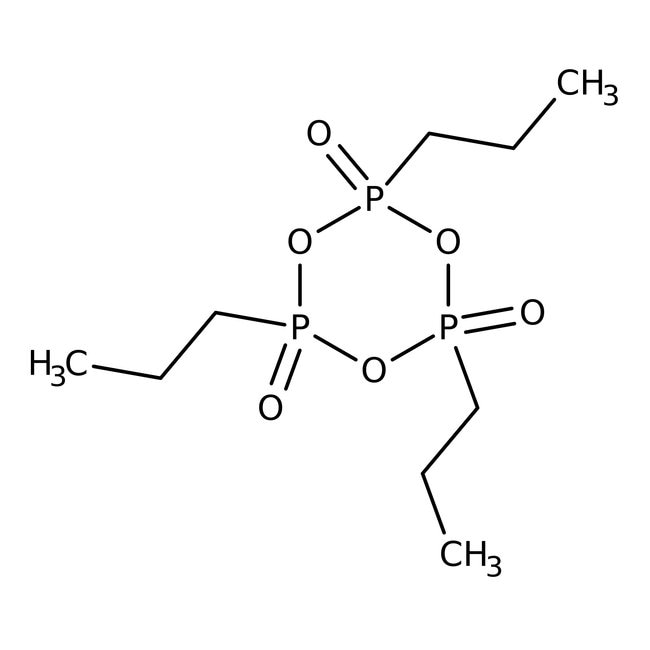Search Thermo Fisher Scientific
Anhídrido cíclico de ácido 1-propilfosfónico, solución a + 50 % en acetato de etilo, Thermo Scientific Chemicals



Anhídrido cíclico de ácido 1-propilfosfónico, solución a + 50 % en acetato de etilo, Thermo Scientific Chemicals
Identificadores químicos
Especificaciones
Descripción
This Thermo Scientific Chemicals brand product was originally part of the Alfa Aesar product portfolio. Some documentation and label information may refer to the legacy brand. The original Alfa Aesar product / item code or SKU reference has not changed as a part of the brand transition to Thermo Scientific Chemicals.
El anhídrido cíclico del ácido 1-propilfosfónico se utiliza en la síntesis de N-aciloxitiazol-2(3H)-tiones. También se utiliza para promover la síntesis de ácidos hidroxámicos a partir de ácidos carboxílicos. Además, se emplea como promotor eficaz en el rearreglo de Lossen para la síntesis de derivados de urea y carbamato.
Solubilidad
Miscible con diclorometano, dimetilformamida, dioxano, terahidrofurano y disolventes orgánicos polares y apróticos.
Notas
Sensible a la humedad. Incompatible con agentes oxidantes fuertes.
Figuras
Documentos y descargas
Certificados
Preguntas frecuentes
Citas y referencias
Seguridad y manipulación
Classification of the substance or mixture
CLP classification - Regulation(EC) No 1272/2008
Label Elements
Signal Word
Danger
Hazard Statements
H314 - Causes severe skin burns and eye damage
H336 - May cause drowsiness or dizziness
Physical Hazards
H225 - Highly flammable liquid and vapor
Precautionary Statements
P261 - Avoid breathing dust/fume/gas/mist/vapors/spray
P210 - Keep away from heat, hot surfaces, sparks, open flames and other ignition sources. No smoking
P280 - Wear eye protection/ face protection
P301 + P330 + P331 - IF SWALLOWED: rinse mouth. Do NOT induce vomiting
P305 + P351 + P338 - IF IN EYES: Rinse cautiously with water for several minutes. Remove contact lenses, if present and easy to do. Continue rinsing
P310 - Immediately call a POISON CENTER or doctor/physician